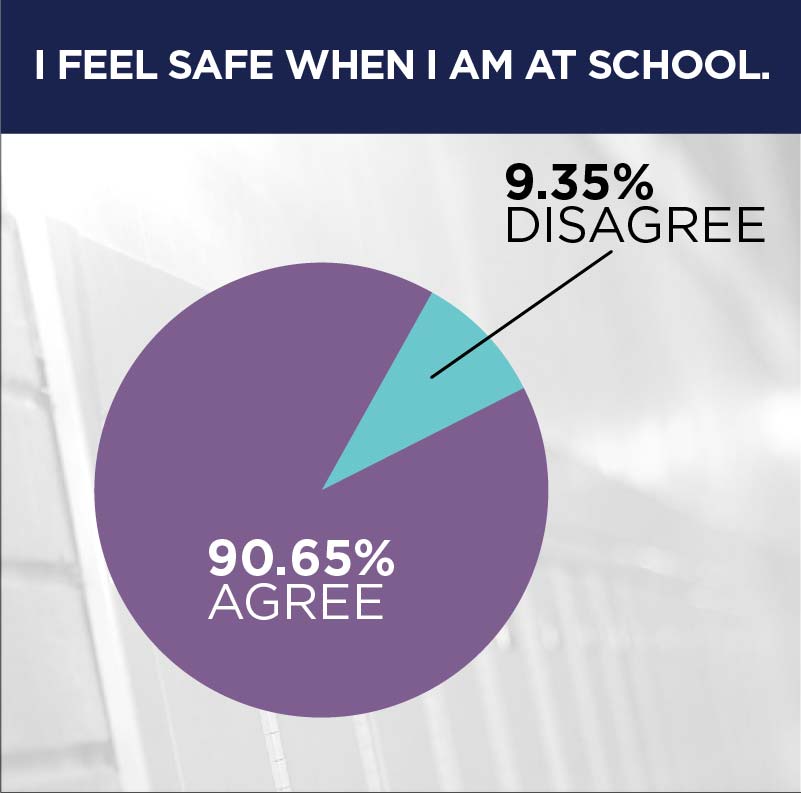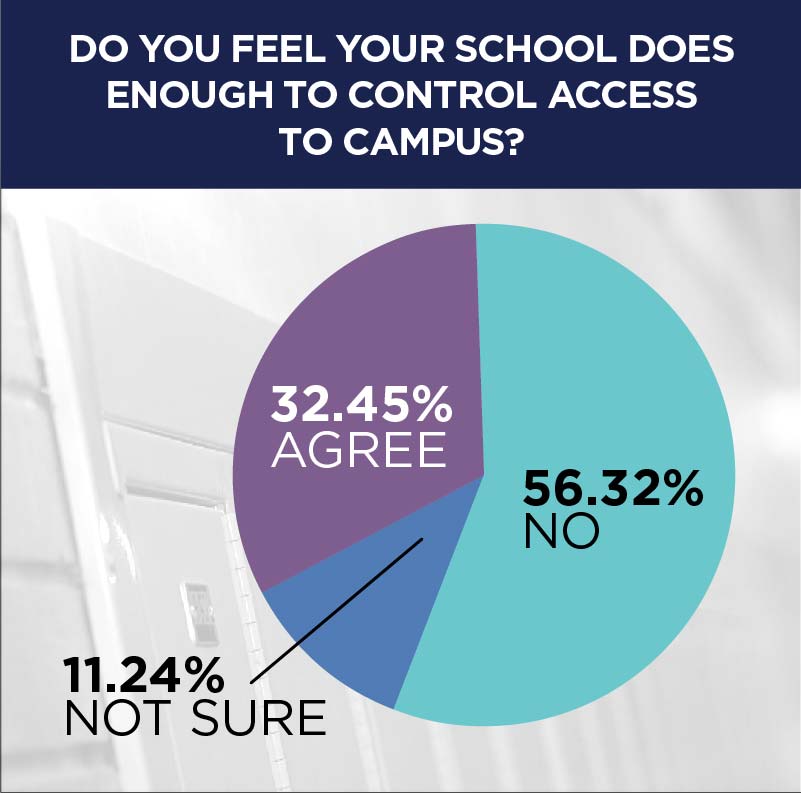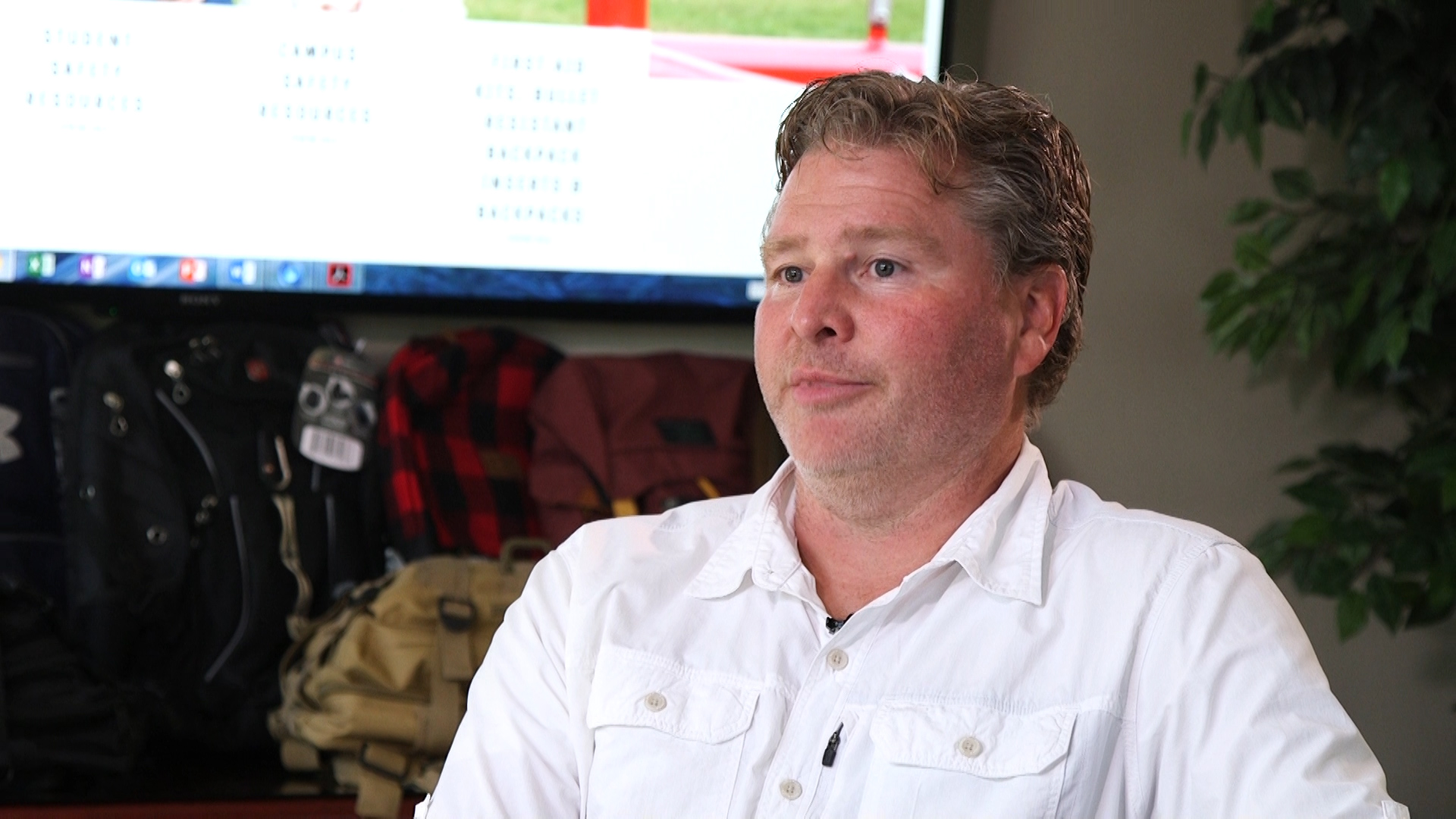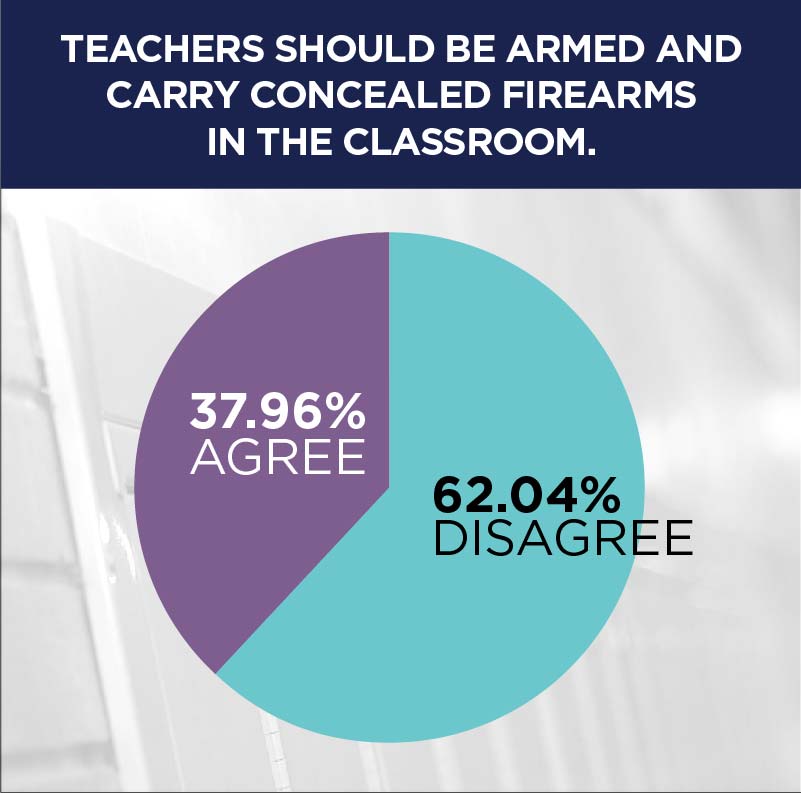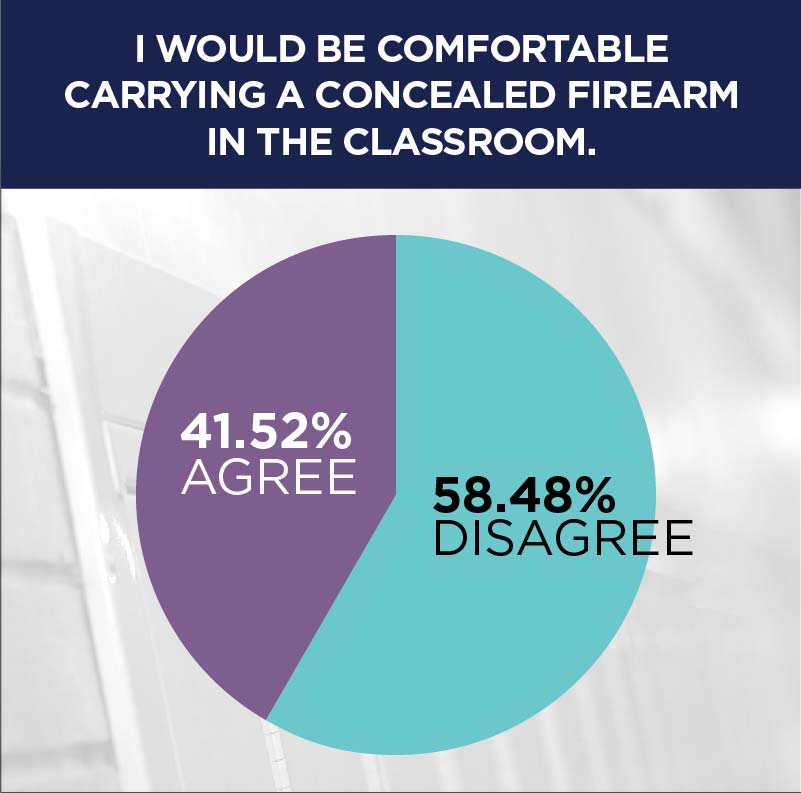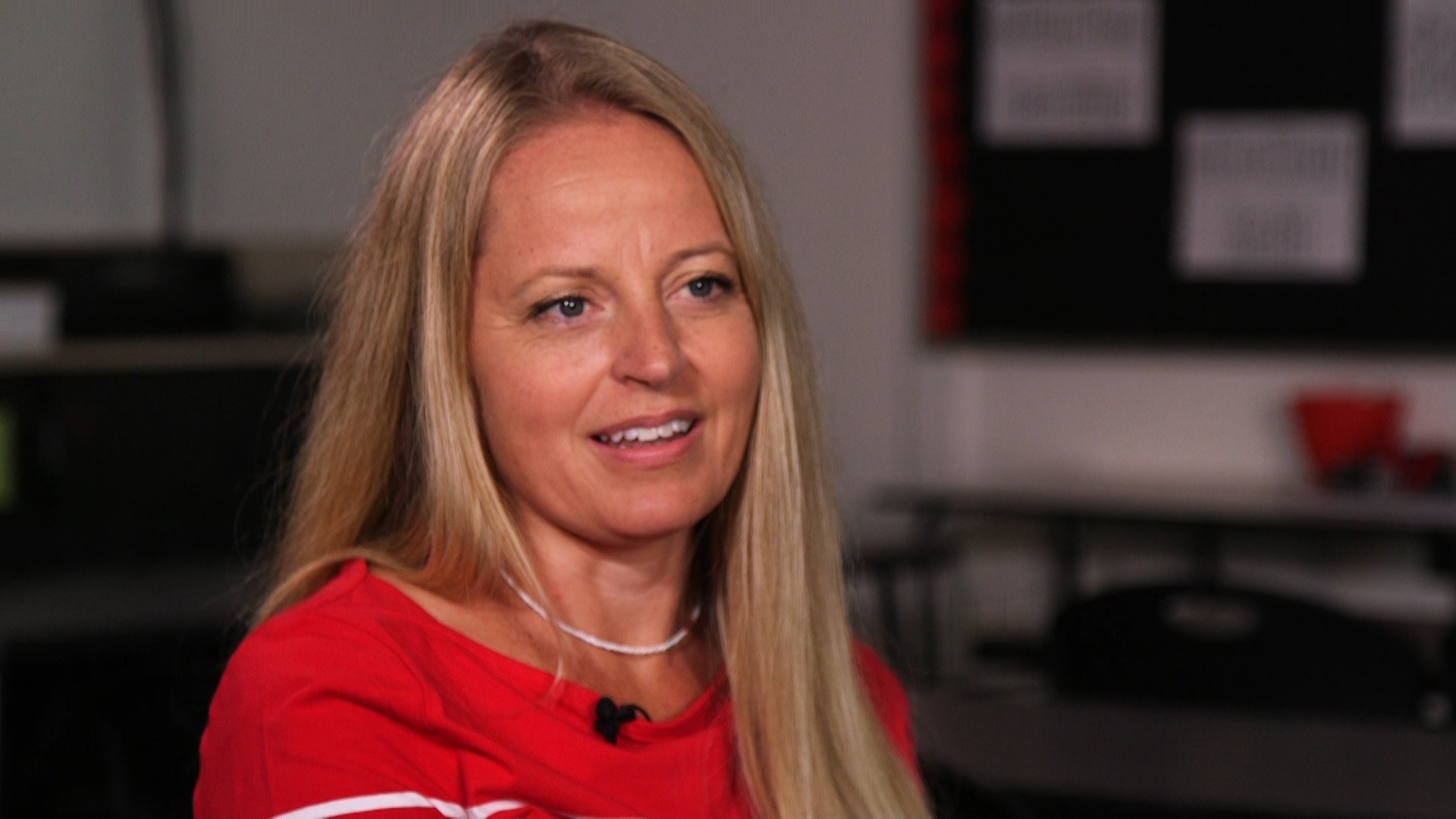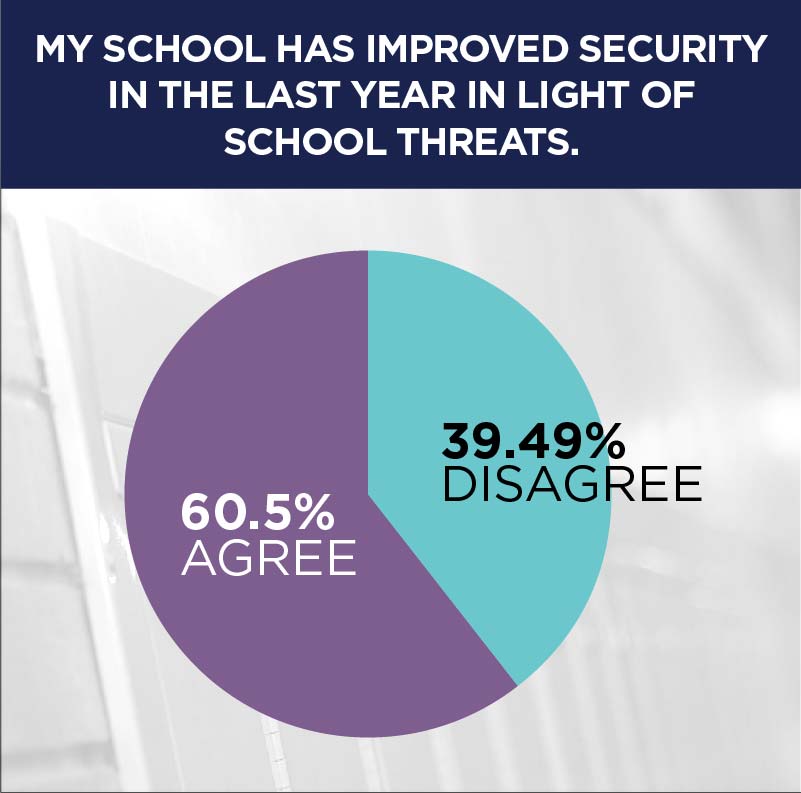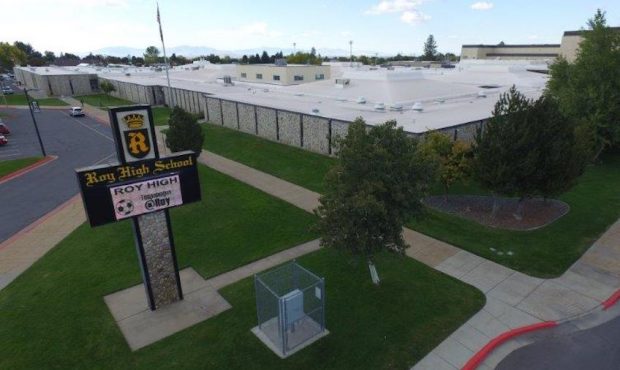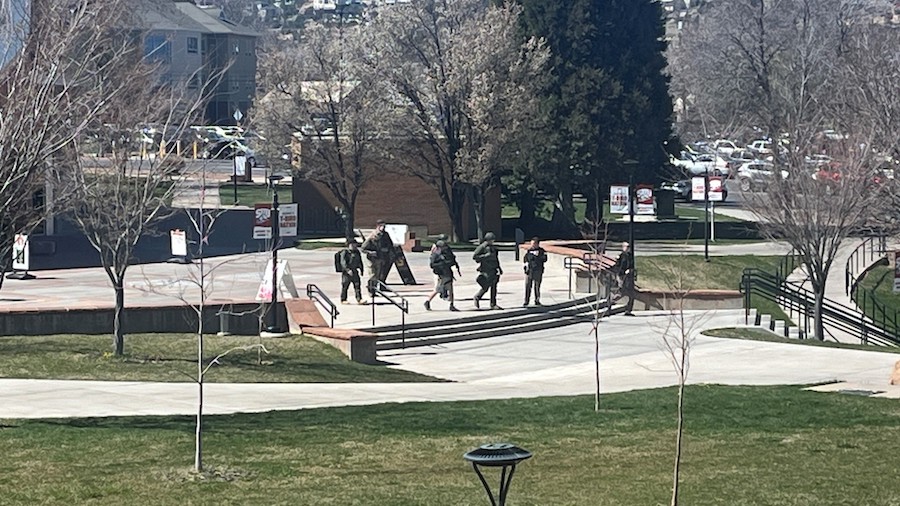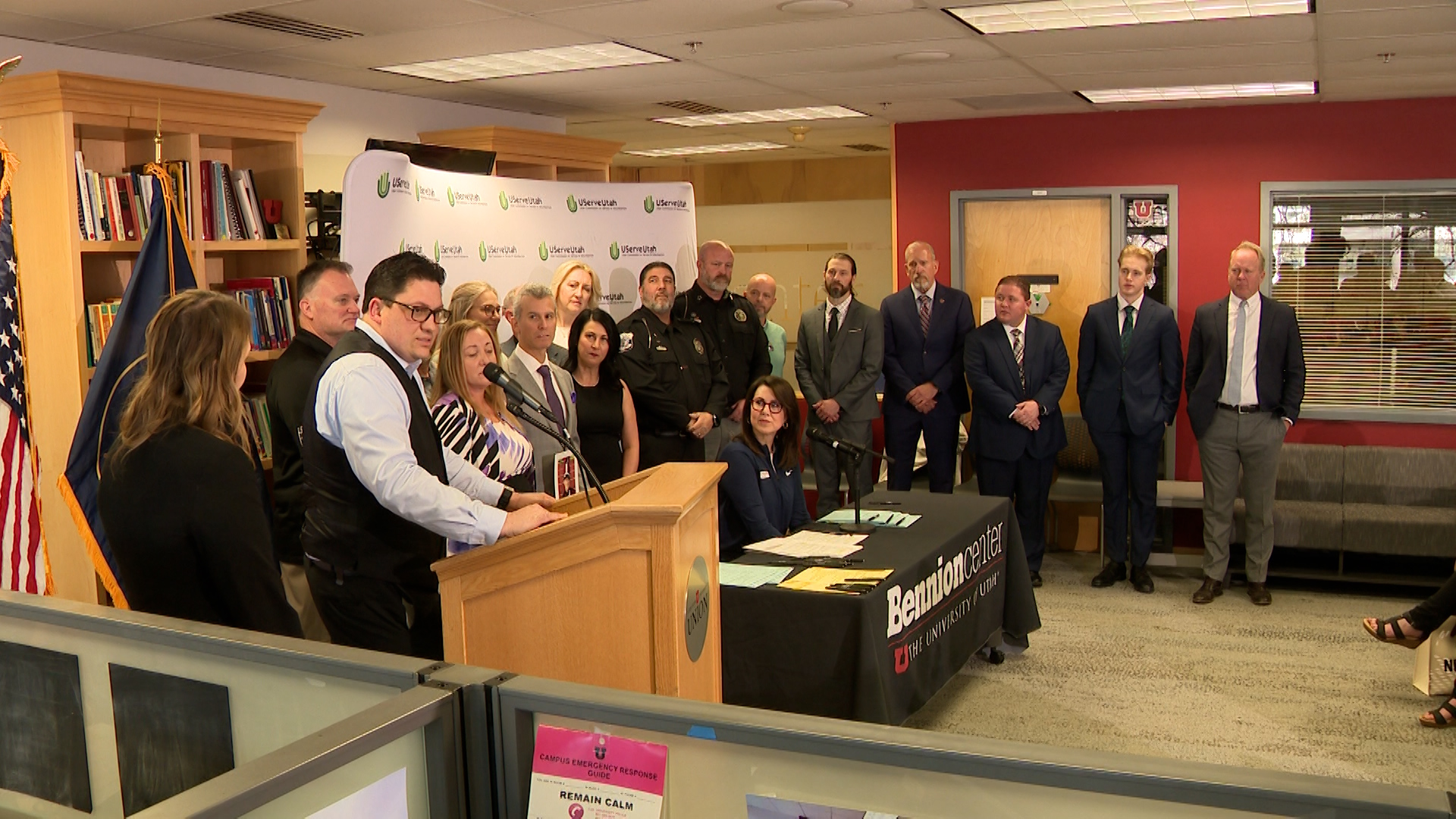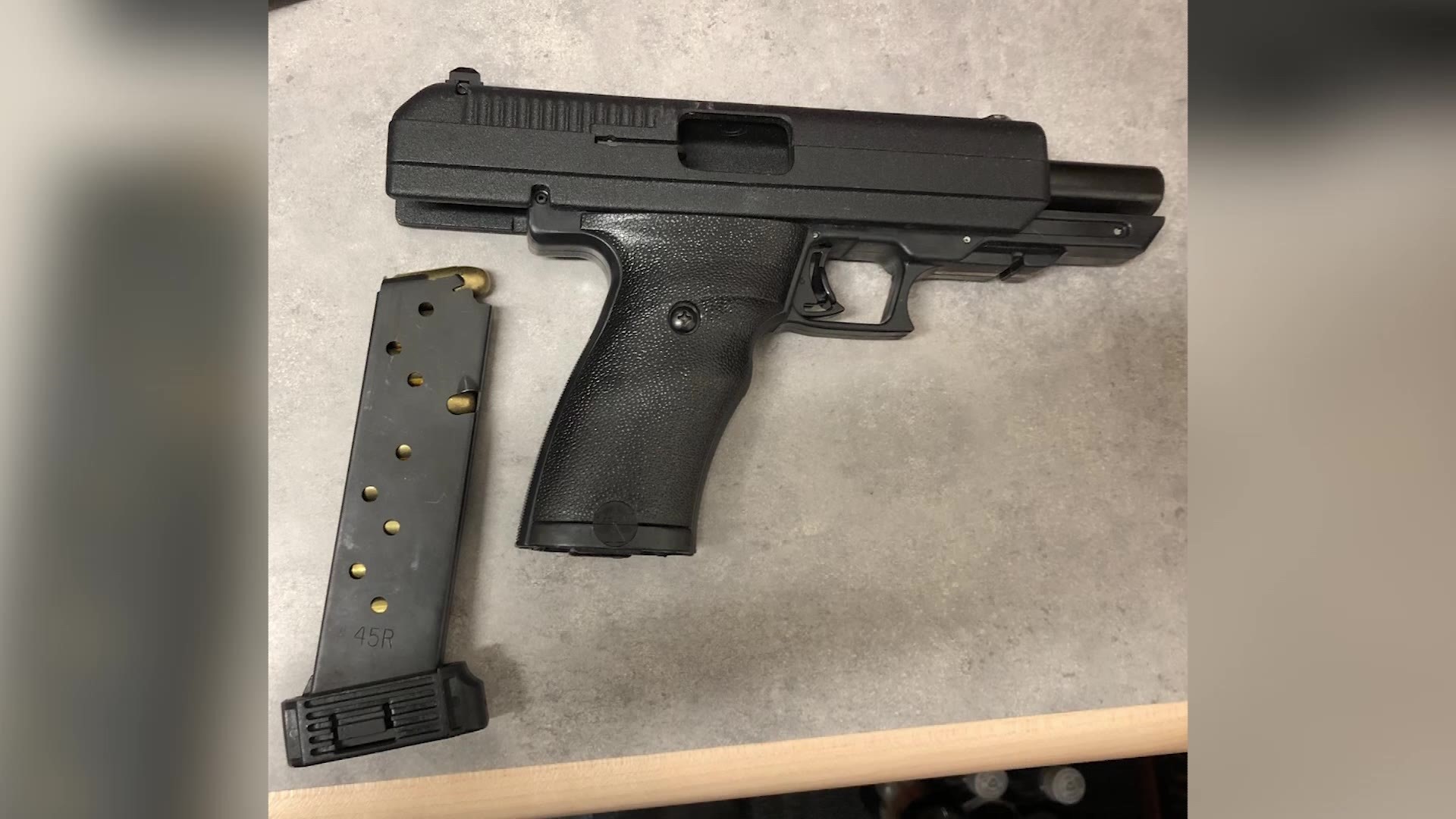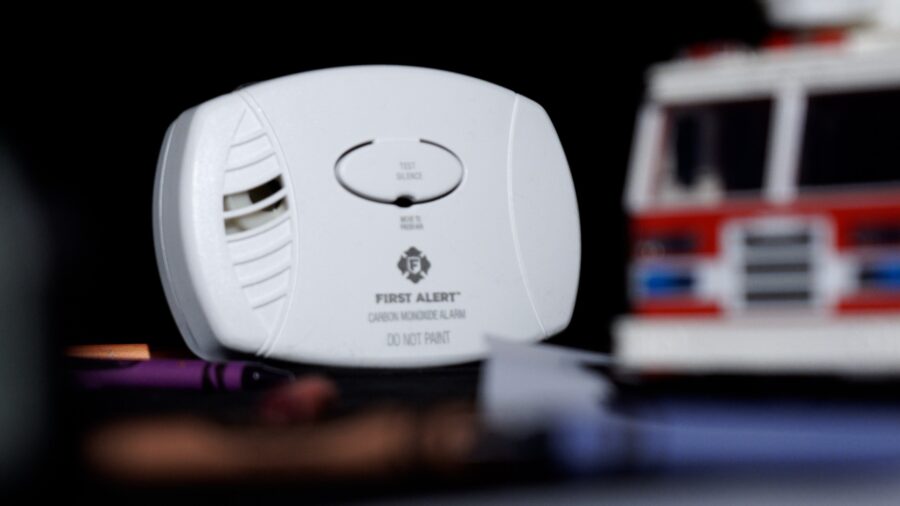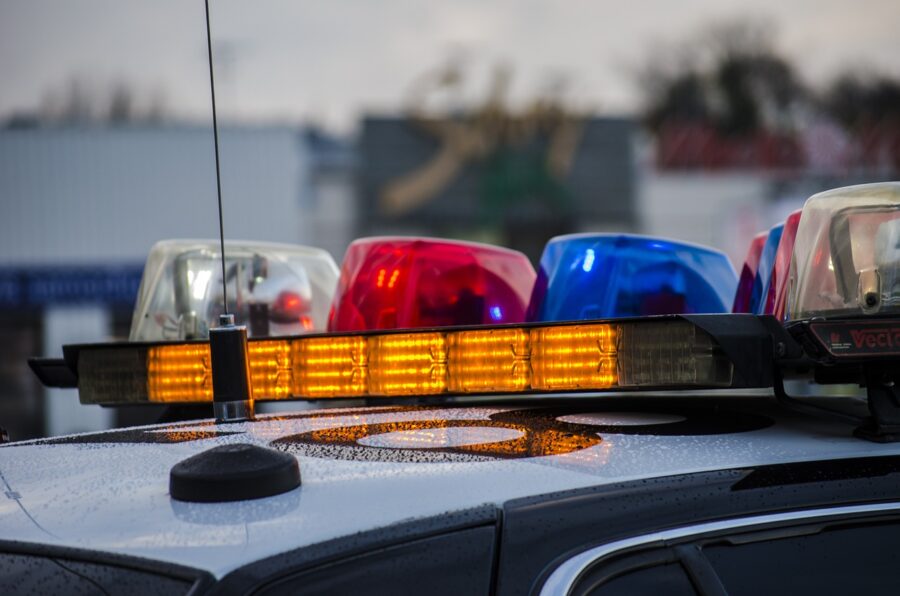KSL Teacher Survey: Schools Don’t Do Enough to Control Access to Campus
Aug 20, 2018, 10:15 PM | Updated: May 21, 2023, 4:02 pm
AMERICAN FORK, Utah — Rachel Bradshaw, an English teacher at American Fork High School, prepares her classroom for the school year by covering any glass with butcher paper.
She locks the door to her classroom, which can only be done from the outside, and inserts a magnet in the door frame. This way, she can remove the magnet quickly and secure the door, if needed.
“It’s just a habit,” she said. “I do it every day.”
According to a KSL survey sent to more than 5,800 high school teachers across the state, Bradshaw and her educator peers are returning to their classrooms statewide with more on their minds than new students and lesson plans.
“The thought of having 30 students looking to me and me being the one responsible for their safety is extremely overwhelming and not what I signed up for,” one teacher wrote.
“I’m trained to fight illiteracy, not insurgency,” lamented another.
More than 1,400 teachers responded to the 27-question survey on topics ranging from safety to mental health.
Around 90 percent of respondents reported feeling safe in their schools and classrooms. But almost 60 percent said they didn’t feel their schools did enough to control access to their buildings.
Teachers who responded to the survey had a variety of suggestions for how to improve security ranging from installing metal detectors, utilizing a single entrance and employing additional security personnel to changing building designs to eliminate glass windows and walls that could leave classrooms vulnerable.
Like Bradshaw, Clark Hogan, a physics and astronomy teacher at Bonneville High School in Washington Terrace, takes his own, additional measures to feel safe in his classroom. His desire to provide safety in his classroom prompted him to develop a business that centers around bulletproof backpacks and first aid supplies.
He keeps both in his own classroom.
“I have a bulletproof backpack loaded with first aid supplies,” he said. “Kind of high end first responder first aid supplies — tourniquets, blood clotting sponges, Israeli bandages and as much trauma first aid supplies that I can get in a small space.”
Hogan’s company began as a response to the tragic school shooting at Sandy Hook Elementary School in 2012. He said the incident had a significant effect on him.
“I have several children in elementary school and it really bothered me,” he said. “Then as time goes on, you see more and more incidents of violence at school and I just felt like teachers and students need some way to protect themselves and respond to that violence.”
Hogan wouldn’t say whether he carried a concealed weapon, but while 62 percent of respondents disagreed with the notion of arming teachers with a concealed firearm and 59 percent said they would be uncomfortable if asked to do so, many teachers still suggested having a small number of teachers with concealed carry permits trained and ready to act if necessary.
“I believe it would be a helpful deterrent for students (and parents) to be aware that some teachers carry concealed firearms,” wrote one teacher. “Precedent shows that shooters target ‘gun-free’ zones, so making it known that faculty can and do carry firearms would be a good initial deterrent.”
“I believe it would be beneficial for those teachers and administrators who carry concealed firearms to have some level of coordination and planning to define expectations in the event of an incident. Periodic shooting practice as a group (optional) could also be beneficial to build trust between faculty members.”
Bradshaw said she does not think arming teachers is the answer and was adamant that having a gun in her classroom would never be an option for her. She, like many respondents, urged instead for greater focus on mental health.
“I worry more about the mental health of my students than about our actual physical safety,” Bradshaw said. “I worry about them on a day to day basis. I worry about their mental health more than anything else.”
She isn’t alone.
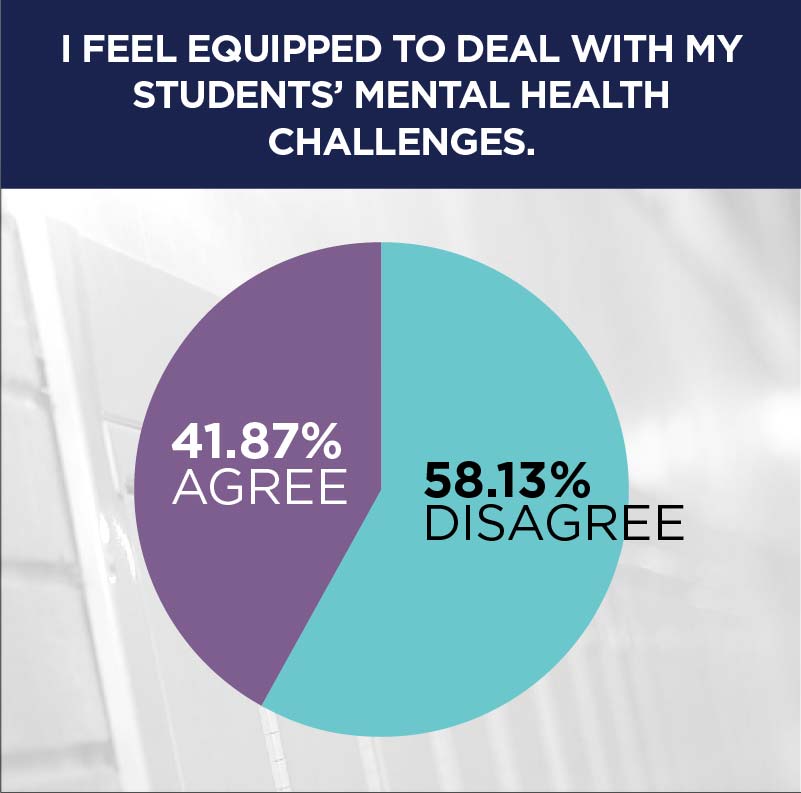 Overall, almost 60 percent of teachers who responded said they didn’t feel they were equipped to deal with their students’ mental health challenges. This was echoed by all three of the teachers interviewed by KSL.
Overall, almost 60 percent of teachers who responded said they didn’t feel they were equipped to deal with their students’ mental health challenges. This was echoed by all three of the teachers interviewed by KSL.
These concerns were shared by the Utah Safe Schools Commission, whose June report included three “tier one” recommendations, or those recommendations “with strong consensus … that action should be taken.” Two of the three were related to mental health, calling for quick availability of trained mental health teams for high-risk students and mandated mental health reporting.
Bradshaw said she would love to see a dedicated mental health professional at American Fork High School, someone not also charged with changing schedules and providing academic guidance, but there solely to help students and support faculty as they also seek to aid students.
“I think that’s the number one thing, is we need more mental health professionals that are trained and aware of the issues that these students are facing and ready to help both teachers and students,” she said. “That’s just the number one thing for me.”
She and many survey respondents also emphasized the importance of involvement and interest in the lives of students. They stressed the significance of knowing and connecting with students and cultivating a community where students feel supported.
“Nothing can make a school completely safe,” one respondent wrote. “Pay attention to what is going on in your school and community. Know your students so they will share their concerns with you.”
“Increase focus on building a strong community, know everybody’s name, really know our students,” wrote another. “Smaller, more intimate classes. These things will do more for safety than armed guards and guns. I really believe that.”
Bradshaw said that last year her school did an exercise where the teachers and staff looked at class photos featuring every student in each grade at the school. They were asked to mark the face of a student with whom they had a meaningful interaction.
“I would walk around and I would look at these pictures and some of these students had 10 little tick marks … covering their entire face. And then some students had none,” she said. “There was a student I was working with a lot this year, that needed a lot of help, and I was walked through and he had one tick mark on his face and it was the one that I put on.”
She became emotional recalling the incident and emphasized the impact of reaching out in a sincere way.
“Every student needs somebody to reach out to them all the time,” she said. “If we can actively do some process where we make sure that every student has at least one meaningful connection with one staff member, one teacher, then maybe we can help prevent a tragedy from happening.”
Kami Frei, a family and consumer science teacher at Cedar High School in Cedar City, said helping students is a “group effort” that should involve more than just teachers. She said the responsibility lies first with parents to be involved with their children and get to know what’s going on in their lives.
“And then, you know, from that, we can work together as parents and students and teachers and community leaders and religious leaders and doctors and health care professionals to come up with positive solutions to help kids that are in need,” Frei said.
Resources for reporting and addressing concerns are also becoming more available and the majority of respondents — nearly 78 percent — said their schools use the SafeUT app, which allows for reporting safety concerns or threats made. Almost 74 percent also said their school did an active shooter drill in the past year.
Frei said she feels that her school and school district are doing all that they can to ensure that schools are safe. After the shooting at Sandy Hook, she said they offered classes on concealed carry permits and profiling, which she took and found helpful.
“I feel like living in fear is not a good thing, but at the same time, if you ask me if I’m concerned about the safety of my students, I am,” Frei said, before adding: “I feel like our school and our district are doing all that they can to ensure that our school is safe and they’re making the necessary changes to ensure that students feel safe when they come to school.”
Hogan, too, said he feels that those at Bonneville High are taking the issue seriously and doing the best they can with what they have.
“I think they’re in the same position as individual teachers of being pulled in a lot of different directions,” he said. “You can’t make every dollar priority one for several different areas. So they do the best compromise they can with education and security and athletics and all the different things they have to manage.”
“I feel like our school and our district are doing all that they can to ensure that our school is safe and they’re making the necessary changes to ensure that students feel safe when they come to school.”
Meantime, high school teachers around the state continue to do what they can to prepare their classes in case of the unthinkable.
One teacher reported that after the shooting at Parkland High School in Florida, they taped off areas of their classroom where students could go undetected by someone peering in from outside.
“I actively teach students how to encounter an active shooter,” said another. “Run, hide, and fight. Throw objects at shooter while shooting, all students at once, while approaching the shooter and getting the gun pointed in a safe direction.”
Others, like Bradshaw, stock their rooms with supplies they might need in an emergency situation. She said she keeps water bottles and snacks such as granola bars on hand in case of a long lockdown.
There’s also an emergency toilet provided by a local eagle scout, which is essentially a bucket with some kitty litter in the bottom and a shower curtain to provide privacy.
“We’ve never had to use it and hopefully we won’t ever have to use it,” Bradshaw said.
But perhaps what is most telling is the last thing Bradshaw wrote when asked what she does to ensure student safety beyond active shooter drills.
“I try to love ALL my students,” she wrote. “I try to reach out to the ones who are on the fringes. I try to have a relationship with every single kid! That’s what I pray will help prevent a tragedy the most.”
Read more of KSL’s coverage In Search of Safe Schools

